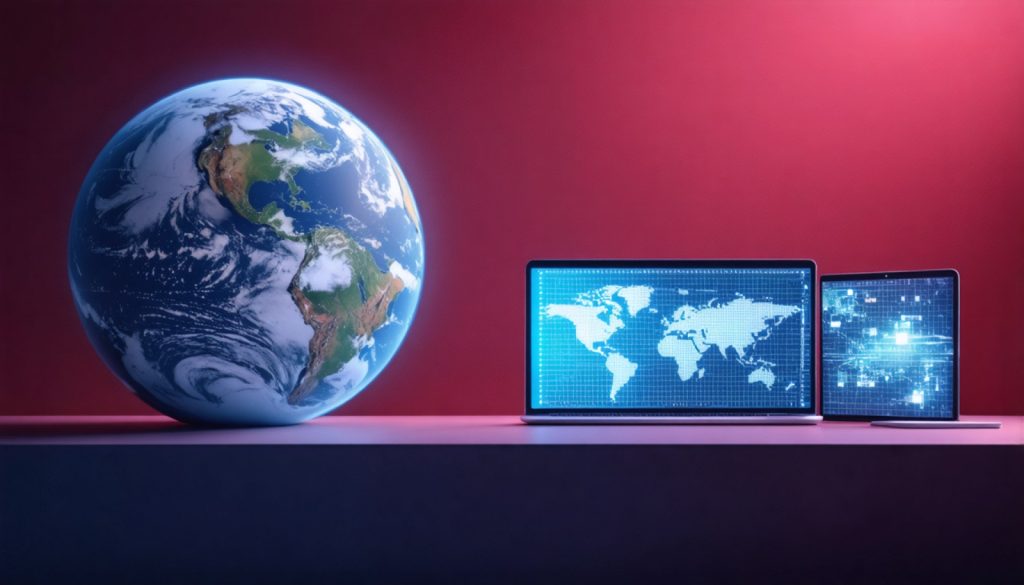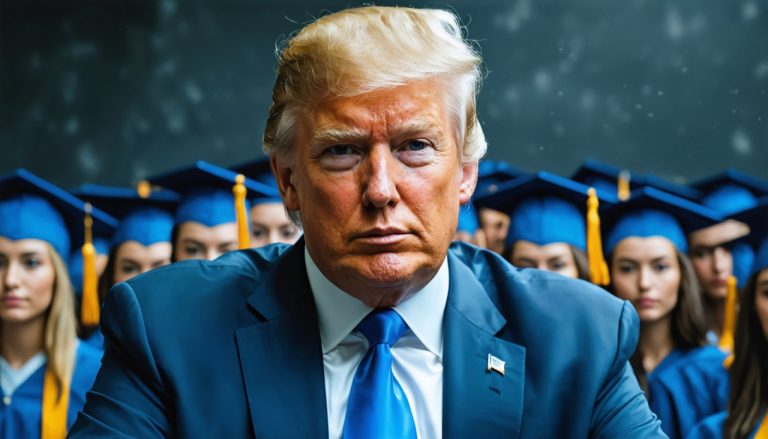
- Global tech companies navigate the complex interplay of business and politics amid U.S.-China trade tensions.
- Senator Warren’s probe into Apple’s political activities highlights the scrutiny facing tech giants.
- Alphabet Inc. reports a 12% revenue increase, showcasing growth despite external pressures.
- Microsoft promotes its new Microsoft 365 Copilot app, vying for digital market supremacy.
- Apple faces supply chain issues with the iPhone 17 due to material shortages.
- Elon Musk’s Neuralink targets assistive technology advancements with promising new developments.
- Tesla progresses with autonomous ride-hailing and shifts its Cybertruck strategy.
- Chinese firms BYD and CATL expand globally, advancing electric vehicle technology.
- Adaptation and decisive innovation are crucial in navigating the intertwined landscape of tech and politics.
In the ever-shifting landscape of global technology, the intersection of business and politics creates a riveting spectacle. Amid trade tensions simmering between the U.S. and China, tech companies stand on a precipice, balancing innovation with political navigation. Senator Elizabeth Warren’s recent inquiry into Apple’s alleged “influence-peddling” with the Trump administration underscores this delicate dance. This scrutiny casts a spotlight on the precarious balance that tech giants like Apple must maintain, as the clock ticks on trade negotiations between two world powers. Meanwhile, analysts warn Wall Street of potential pitfalls in the ongoing tug-of-war.
Amid this backdrop, businesses are racing against time as they rapidly unveil their earnings. Alphabet Inc., Google’s parent company, reported a strong start with a 12% revenue increase over the last year, signaling robust growth despite external pressures. Microsoft steps into the spotlight, too, with its revamped Microsoft 365 Copilot app, embodying the fierce competition for digital dominance.
In stark contrast, Apple faces significant challenges. The company grapples with stock shortages of the new iPhone 17 series, attributed to the scarcity of essential materials like Low CTE fiberglass cloth. This predicament raises concerns about supply chain vulnerabilities and global dependencies, leaving CEO Tim Cook looking for swift solutions.
Elsewhere in the tech landscape, Elon Musk’s ventures continue to capture imaginations. Neuralink’s bold promise to restore vision to the ‘completely blind’ heralds a new dawn for assistive technology. With his brain-computer interface company eyeing a valuation of $8.5 billion, Musk showcases his relentless drive to push boundaries and redefine possibilities.
The automotive sector is not immune to these seismic shifts. Tesla, under Musk’s leadership, repositions its Cybertruck, focusing on versatility, while production plans for Optimus, a humanoid robot, face hurdles amid China’s export restrictions. However, Tesla’s pioneering autonomous ride-hailing service quietly makes headway in Austin and the Bay Area, hinting at a future of self-driving innovation.
Across the Pacific, Chinese manufacturers like BYD and CATL make strategic moves, positioning themselves as formidable competitors in the global EV arena. With BYD recalibrating its European strategy and CATL launching a faster-charging battery, the electric dreams of tomorrow are realized today.
Amid earnings and innovations, one clear message emerges: the tech industry stands resolute, navigating a labyrinth of challenges while pursuing grand visions. This intricate dance of technology, politics, and business is more than just a spectacle—it’s the rhythm that shapes our modern world. The takeaway? In a realm where tomorrow’s technology meets today’s uncertainties, those who adapt swiftly and innovate decisively chart the course to the future.
The Future of Tech: Navigating Political Tensions, Innovations, and Market Dynamics
Navigating Geopolitical Tensions in the Tech Industry
The ongoing technology tug-of-war between the U.S. and China highlights the complex intersection of business and politics. With Senator Elizabeth Warren scrutinizing Apple’s alleged “influence-peddling,” the spotlight is on how tech giants navigate these challenges. Apple, a key player in this landscape, faces scrutiny as it balances innovation with geopolitical dynamics.
Understanding Apple’s Supply Chain Vulnerabilities
Apple’s current struggles with the iPhone 17 shortage highlight broader issues of global supply chain vulnerabilities. This is largely due to scarce materials like Low CTE fiberglass cloth, exacerbated by trade tensions and global dependencies. As a quick tip, companies should diversify their supply chains and seek local suppliers to mitigate risks.
Google’s Impressive Earnings and Microsoft’s Competitive Push
Alphabet Inc. has reported a 12% revenue increase year-over-year, showing resilience against external pressures. Meanwhile, Microsoft’s reimagined Microsoft 365 Copilot app signals a fierce rivalry in digital workplaces. This competition drives innovation in AI and computing solutions, offering more dynamic tools for businesses.
Elon Musk’s Ventures: Pushing the Envelope of Innovation
Elon Musk continues to captivate with innovative endeavors. Neuralink eyeing an $8.5 billion valuation with its promise to restore vision radically shifts the paradigm in assistive technology. This aligns with Musk’s vision to redefine human-computer interaction and open new frontiers in technology.
Tesla’s Versatile Strategies Amidst Challenges
Tesla’s repositioning of the Cybertruck and strategic focus on autonomous ride-hailing in Austin and the Bay Area lay a robust foundation for future mobility. However, challenges like production hurdles from China’s export restrictions require agile responses to sustain momentum in innovation.
The Emerging Influence of Chinese EV Manufacturers
Chinese powerhouses like BYD and CATL are stepping up in the global EV market. With BYD adjusting its European strategy and CATL’s innovative faster-charging battery, these companies position themselves as formidable global competitors. This emphasizes the rise of Chinese influence in the automotive sector.
Potential Opportunities and Recommendations
1. Diversify Supply Chains: Tech companies should consider sourcing diversified materials to mitigate geopolitical risks.
2. Leverage AI Tools: Businesses can adopt Microsoft 365 Copilot features to enhance productivity through AI-driven insights.
3. Monitor EV Trends: Keep an eye on developments from BYD and CATL to anticipate shifts in EV market dynamics.
4. Embrace Autonomous Technologies: Explore autonomous tech opportunities, as indicated by Tesla’s progress, to stay ahead in the mobility industry.
Related Links
– For more insights on global supply chain strategies, visit McKinsey & Company.
– Explore technological innovations and trends at Gartner.
In a rapidly changing tech landscape marked by geopolitical shifts and fierce competition, adaptability and innovation are key to thriving. By leveraging these insights, businesses can position themselves at the forefront of the industry’s evolution.



